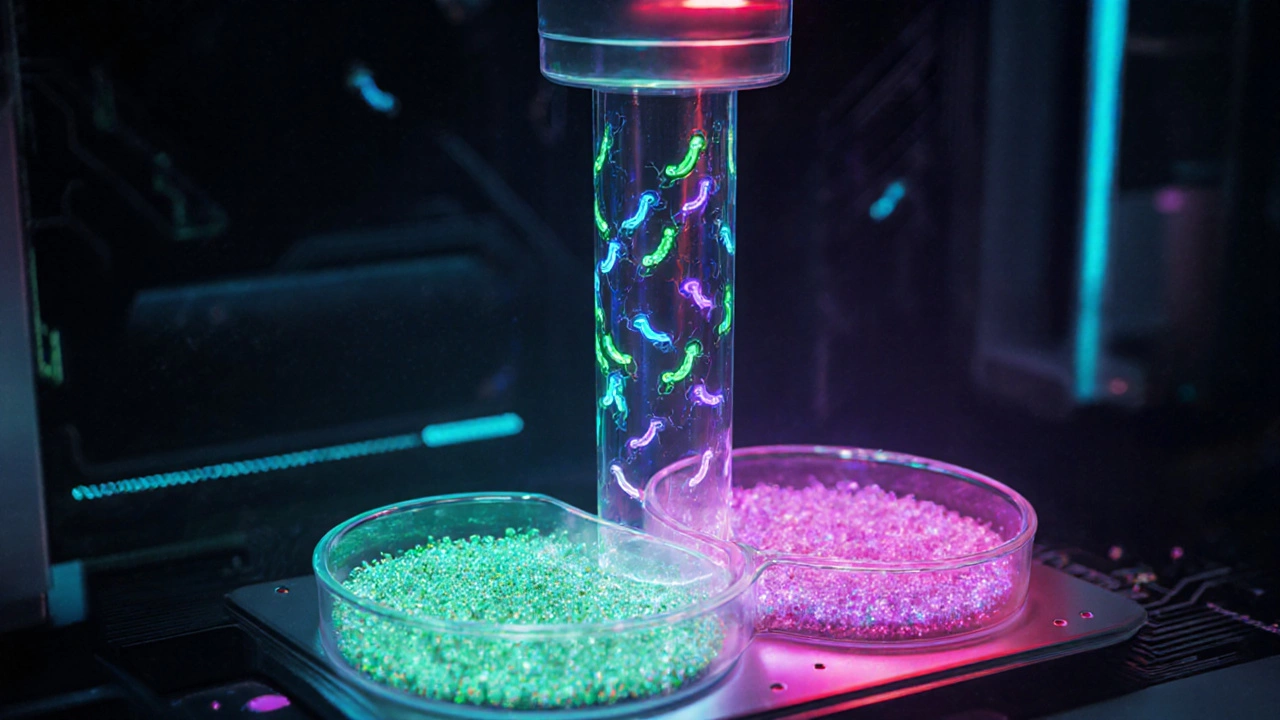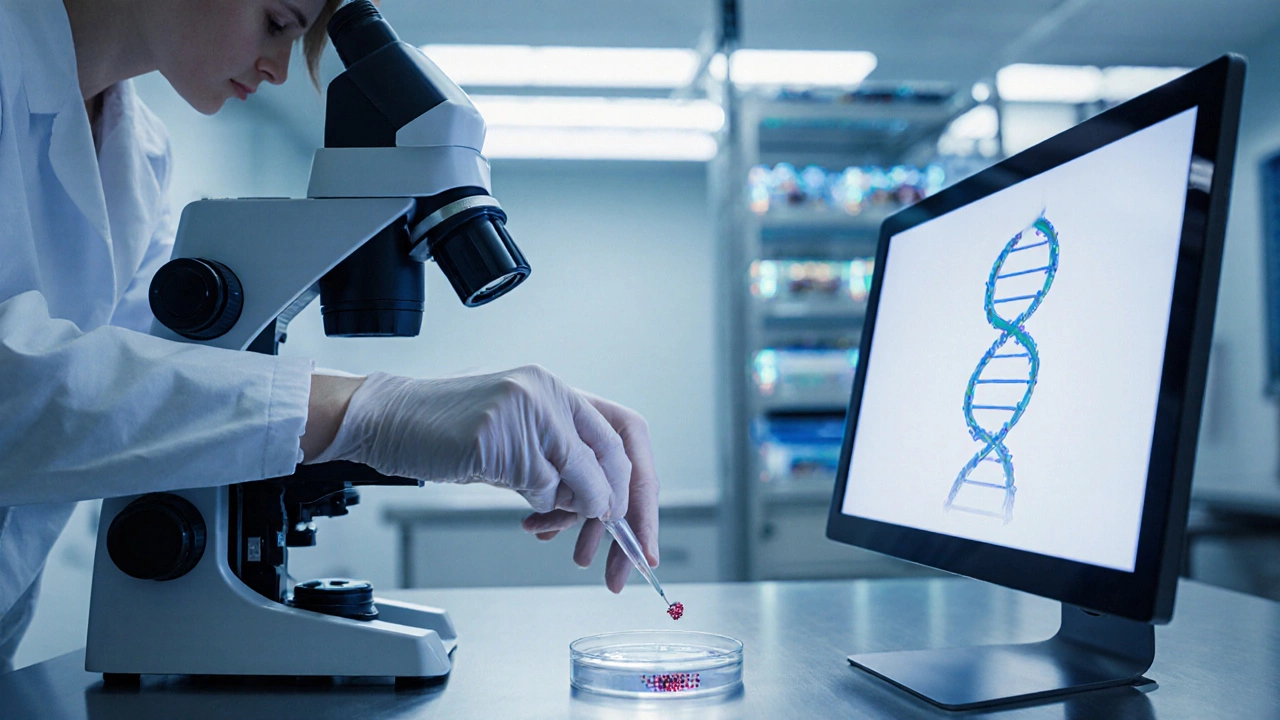IVF Gender Selection Success Calculator
Based on SART 2024 data, this calculator estimates your probability of selecting the desired gender based on available embryos.
Your Success Probability
Note: This estimate assumes at least one embryo will be available for transfer. Actual success depends on your specific medical situation.
Ever wondered if you can pick the gender of your future child during IVF? The short answer is yes, but it’s not as simple as ordering a pink or blue outfit online. In this guide we’ll break down the science, the methods, the legal landscape, and the real‑world outcomes so you know exactly what to expect.
What is IVF gender selection?
IVF gender selection is the process of using in‑vitro fertilization combined with genetic testing to identify and transfer embryos of a desired sex. It works because embryos develop a set of sex chromosomes (XX for female, XY for male) from the moment the sperm meets the egg. By looking at those chromosomes before implantation, clinics can choose which ones to place in the womb.
How does sex selection fit into a standard IVF cycle?
Typical IVF involves stimulating the ovaries, retrieving eggs, fertilizing them, and then growing embryos for a few days before transfer. When you add gender selection, an extra step called preimplantation genetic testing (PGT) is performed on day‑3 or day‑5 embryos. The lab biopsies a few cells, runs a quick DNA test, and reports the sex.
Only embryos that match the selected sex are kept for transfer; the rest are usually frozen for future use or discarded according to clinic policy.
Main methods to choose gender
There are three medically recognized ways to influence a baby's sex during IVF:
- Preimplantation Genetic Diagnosis (PGD) or Preimplantation Genetic Testing for Aneuploidy (PGT‑A): A tiny cell is removed from each embryo, and the lab looks at the X and Y chromosomes. This is the most common and reliable method for gender selection.
- Sperm sorting (e.g., the MicroSort technique): Sperm are separated into those carrying X or Y chromosomes before fertilization. Only the desired sperm are used to create embryos.
- Timing methods (often called “natural” or “dietary” approaches): These rely on theories about when intercourse occurs relative to ovulation. They are not medically proven and are rarely combined with IVF.
Because IVF already involves handling eggs and sperm in the lab, PGD/PGT is the go‑to choice for most couples who want a specific gender.
Step‑by‑step: PGD/PGT for gender selection
- Consultation: Discuss your goals, medical history, and ethical considerations with a reproductive specialist.
- Stimulation: Hormones are given to produce multiple eggs.
- Egg retrieval: A minor procedure retrieves the mature eggs.
- Fertilization: Eggs are mixed with sperm in the lab to create embryos.
- Embryo biopsy: On day 5 (blastocyst stage), a few cells are gently taken from each embryo.
- Genetic testing: The lab runs a rapid PCR or next‑generation sequencing test to read the sex chromosomes.
- Selection: Embryos matching the chosen sex are earmarked for transfer.
- Transfer: One or two selected embryos are placed into the uterus.
- Follow‑up: Pregnancy test and early‑pregnancy monitoring are performed as usual.
All of these steps are routine in modern IVF clinics, but the additional genetic test adds about 1‑2 weeks to the timeline and a modest cost increase.

Sperm sorting: How it works and when it’s used
Sperm sorting separates X‑bearing sperm (which lead to girls) from Y‑bearing sperm (which lead to boys). The most studied method, MicroSort, uses a flow‑cytometry device that stains DNA and splits the cells based on fluorescence. Success rates vary, but studies from the early 2000s reported around 80% accuracy for female selection and 70% for male selection.
Because the sorting happens before fertilization, you can combine the technique with standard IVF or even intra‑uterine insemination (IUI). However, many clinics have moved away from sperm sorting due to the higher reliability of PGD and regulatory hurdles.
Legal and ethical landscape in 2025
Sex selection for non‑medical reasons is legal in many countries, but restrictions exist:
- United States: No federal ban. The American Society for Reproductive Medicine (ASRM) allows gender selection for family‑balancing under strict counseling.
- United Kingdom: The Human Fertilisation and Embryology Authority (HFEA) permits PGD for gender only when there’s a strong medical justification, not for family‑balancing.
- India: Sex selection for non‑medical reasons is illegal under the Pre‑Conception and Pre‑Natal Diagnostic Techniques (PCPNDT) Act.
- Australia: Varies by state; most allow it with ethical review.
Ethical debates focus on gender bias, societal implications, and the slippery slope toward “designer babies.” Most professional societies recommend thorough counseling and written informed consent.
Success rates: How likely are you to get the gender you want?
When PGD/PGT is used, the accuracy exceeds 99% because the test reads the chromosome directly. The limiting factor becomes the number of embryos available. If a cycle produces only one embryo, you either transfer it (regardless of sex) or wait for another retrieval.
Data from the Society for Assisted Reproductive Technology (SART) 2024 report shows that couples who have at least three embryos have a 95% chance of getting the desired gender in the first transfer. The overall live‑birth rate for IVF with PGD is roughly 45% per cycle, similar to standard IVF.

Risks and considerations
Adding a genetic test does not dramatically increase health risks for the mother or baby. The biopsy is performed on a tiny number of cells, and embryos have been shown to develop normally after the procedure. However, there are a few points to keep in mind:
- Embryo loss: The biopsy step carries a very small (<1%) risk of damaging the embryo.
- Cost: PGD adds $3,000‑$5,000 to an IVF cycle in the U.S., with similar ranges in Europe and Asia.
- Emotional pressure: Couples may feel additional stress waiting for the sex‑test result.
- Legal compliance: Clinics must follow local regulations, which can affect availability.
Planning your journey: Practical tips
- Research clinics: Look for those with documented PGD/PGT success rates and clear ethical policies.
- Budget early: Ask for a detailed cost breakdown, including medication, lab fees, and any extra charges for sex selection.
- Schedule counseling: Most reputable centers require a session with a genetic counselor to discuss risks and motivations.
- Consider timing: If you need a specific gender quickly, ask about embryo banking to avoid starting a new cycle.
- Stay informed about laws: Regulations can change, especially in countries with recent debates on reproductive rights.
Bottom line
If your goal is to have a boy or a girl and you’re already planning IVF, gender selection is technically feasible and highly accurate when using PGD/PGT. The biggest hurdles are legal permissions, extra cost, and the emotional weight of making a choice that impacts your future family.
Can I guarantee the gender of my baby with IVF?
When a clinic uses preimplantation genetic testing, the accuracy of identifying the sex is over 99%. The real limitation is the number of embryos you have. If you only produce one embryo, you can’t choose its sex without discarding it.
Is sex selection legal everywhere?
No. Countries like the United Kingdom restrict non‑medical gender selection, while the United States generally allows it under professional guidelines. Always check the local regulations before starting a cycle.
Does adding PGD increase the risk of birth defects?
Current research shows no increase in major birth defects from the biopsy itself. The procedure is considered safe when performed by experienced embryologists.
How much extra does gender selection cost?
In the U.S., the added expense for PGD ranges from $3,000 to $5,000 per cycle. Europe tends to be slightly lower, while some Asian clinics may charge less but could have different success rates.
What are the ethical concerns I should think about?
Key issues include reinforcing gender stereotypes, creating societal imbalances, and the slippery slope toward selecting other traits. Most professional societies ask couples to reflect on motives and undergo counseling before proceeding.
